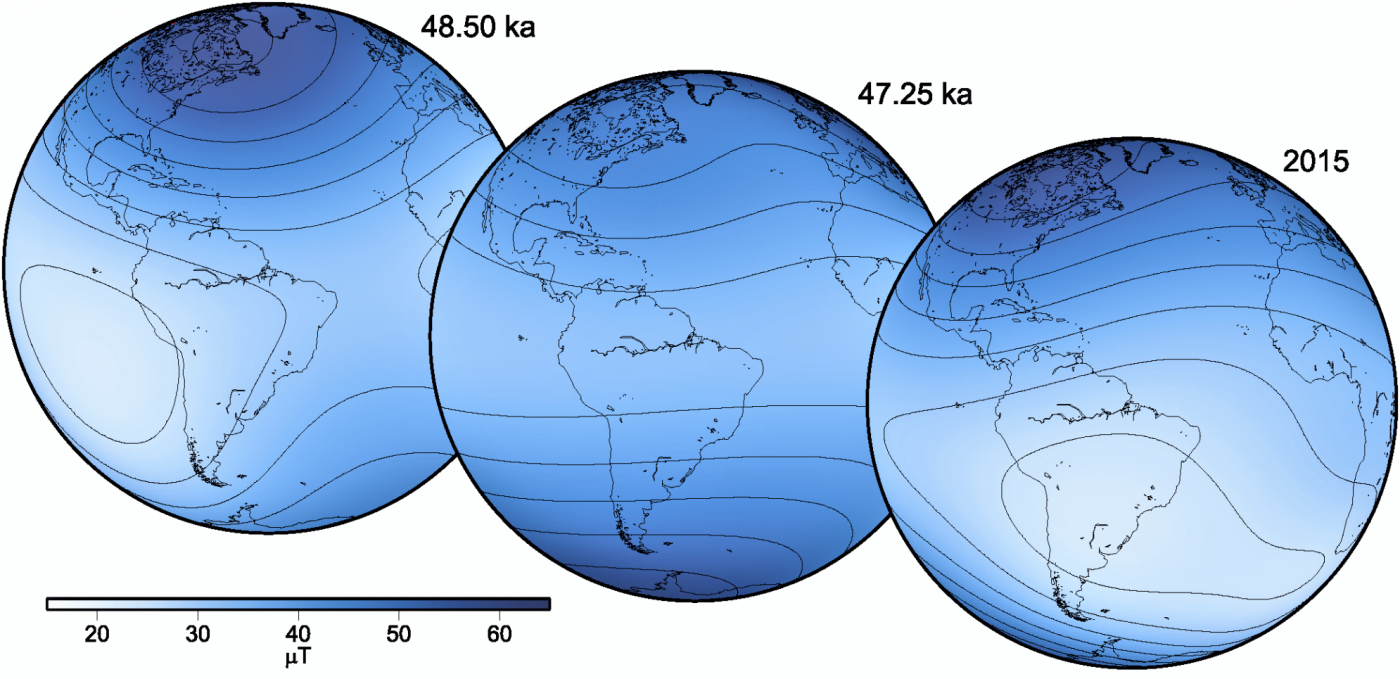Based on a reconstruction of the past behaviour of Earth’s magnetic field, an international research team led by Maxwell Brown, a scientist at the Institute of Earth Sciences, University of Iceland, along with colleagues from the German Research Centre for Geosciences - GFZ, the University of Liverpool, and the University of Nantes, now show that the South Atlantic anomaly is unlikely to be a precursor to a field reversal. The results of this study were recently published in the academic journal Proceedings of the National Academy of Sciences of the United States of America.
The Earth’s magnetic field acts as a shield against hazardous radiation from space, especially charged particles from the sun. Since 1840, the year systematic measurements began, the strength of the magnetic field has decayed at a rate of about five percent per century. During this time a patch of low field strength has developed over the South Atlantic, a phenomenon known as the South Atlantic Anomaly. Within the research community it is a subject of debate whether this anomaly is a sign of an impending reversal of Earth’s magnetic field. During a reversal the magnetic poles flip, such that the South Pole becomes the North Pole and vice versa. Reversals have been common throughout Earth’s history, however, they have not occurred during recorded history creating, so their consequence for society is largely unknown.
In their new study, the scientists reconstructed past changes in the Earth’s magnetic field using paleomagnetic data from sediment cores and volcanic rocks from across the globe. Magnetic minerals in the rocks and sediments record the orientation and strength of Earth’s magnetic field at the time of rock formation. For the time interval of 50,000 to 30,000 years before present, the database has improved to the point that scientists are now able to model changes in the magnetic field globally. "During this time interval there were two occasions when a weak magnetic field over the South Atlantic and South America resembled today’s field. In both cases the field strength in this region increased again after some time and the anomaly disappeared," says Maxwell. He points out that in this time period, around 41,000 years ago, a short-lived reversal of the poles occurred, known as an excursion. This excursion lasted less than one thousand years and the behaviour of the magnetic field was very different than today.
The scientists can, however, not say how long today’s anomaly will persist. The last reversal of the poles took place around 775,000 years ago. It may take thousands of years before the magnetic field reverses again.
Maxwell Brown emphasizes, however, the importance of continued monitoring by ground based observatories as well as satellite missions, as any dangers related to a decrease in field strength are still present, such as electrical damage to satellites passing through today’s South Atlantic Anomaly .
The article in Proceedings of the National Academy of Sciences can be accessed here.





